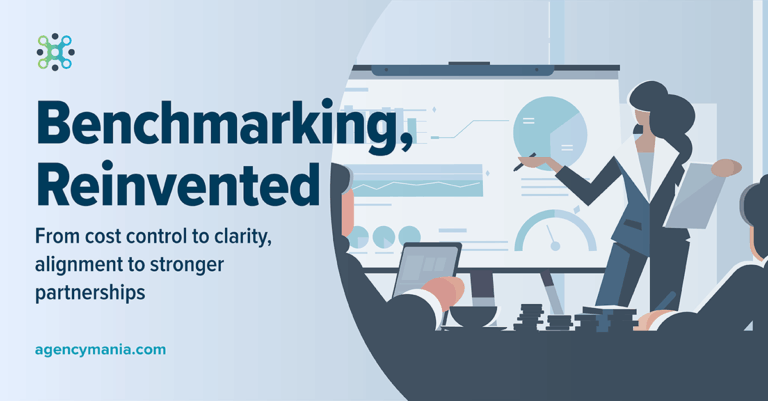The Investment Dilemma:
It often costs a penny to save $100 dollars. That’s right. By cost, I mean “investment.” As with any investment, you expect the return to be far greater than the costs. Therefore, even in a time of economic uncertainty, brand advertisers must invest in solutions like scope management to better manage agency partnerships and reduce expenses. At first, it might sound somehow counter-intuitive to invest when resources are tight.
But eliminating inefficiencies requires more than good will. Systematically and effectively driving efficiencies requires process automation, greater cost transparency, and advanced analytics to zero in on things like redundancies, misalignments, under-optimized resources, wasted efforts, and excessive expenses. Let’s review the major cost efficiencies advertisers can realize by investing in the right solutions:
Common inefficiencies:
Redundancies: These are most common in large organizations where keeping an accurate pulse on the work being produced proves to be challenging. It may be asking for agency partners to create assets that have already been produced by another team or agency and could be easily leveraged, perhaps slightly adjusted to fit the needs of a marketer or a campaign. The duplication of work and efforts can be costly. Digital Asset Management (DAM) systems can help with this, but it’s ideal to spot these redundancies before any asset is created.
Misalignments: Having absolute clarity on goals, resources, and expectations is hard to achieve when priorities shift often. Naturally, misalignments occur when there is a disconnect between what is being expected and what is needed to meet those expectations. In the client/agency relationship, it is often about clarifying scope of work expectations, avoiding scope creep, and making sure that agency resources are right-sized accordingly. A tightly coupled scope of work and staffing alignment process combined with cost benchmarking inevitably removes potential inefficiencies like excessive expenses.
Under-optimized resources: When resources are secured – whether financial or staffing-related – it becomes the advertiser’s responsibility to make effective and complete use of them. In retainer-based relationships, it’s ensuring that retainer or FTE utilization is on plan. Over- or under-utilization of such resources is undesirable. It requires continued monitoring and course-correction. The same applies to adjacent costs like production and media expenditures. The flexible nature of these expenses makes them greater targets for being under-optimized.
Wasted efforts: In a fast-moving environment, projects can be easily delayed or postponed, or cancelled altogether if priorities shift and lead to significant changes in direction. If a project was underway and is cancelled, say, halfway through, it becomes a wasted expense, even though it might be justifiable. So waste is expected in the natural course of doing business. The objective here is to reduce it to a minimum and have a process by which scope of work and related resources can be easily re-prioritizeautomredresour.
These types of inefficiencies are, sadly, too common. Luckily, all of them can be overcome with a more robust, systematic approach to scope and resource management that increases transparency and improves decision-making.
Investing in the right capabilities:
In difficult economic times, every budget line item is being scrubbed and justified. Any incremental spend is set aside and high-value initiatives are prioritized. So why is it the ideal time to invest in a more streamlined, automated scope management system? What makes this type of capability so critical that it must be moved up on the priority list? The often manual, error-prone process of managing the scope planning and ongoing management of individual scope items, assets, and other deliverables is inadequate to spot these inefficiencies. The often disjointed and manual process of having agencies send reports on actuals, utilization, and project status by email is insufficient. Investing in such automated capabilities enables brand advertisers to make more timely, effective decisions about the work itself, the agency talent they rely on, and the applicable finances.
Solving the investment dilemma:
Advertisers must pay it forward to successfully eliminate inefficiencies. The ROI is a no-brainer: for a tiny fraction of their agency spend, they are able to implement and rely on a comprehensive, robust management system that will allow them to improve alignment and resource utilization while identifying costly gaps and addressing them analytically and thoroughly. This is not only a way to drive short-term cost efficiencies. It can also institutionalize a more rigorous and collaborative way of engaging with agency partners that will keep paying off over time.
By: Bruno Gralpois, Co-Founder & Principal
Download a print friendly version here
6/8/20






